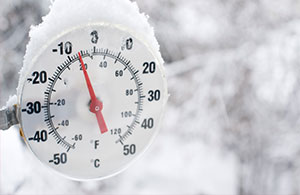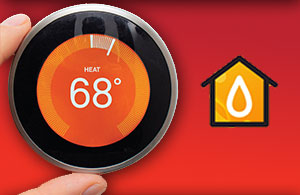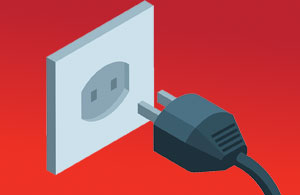The checklist you need to winterize your home.
 The frigid temperatures and severe weather conditions of winter make it the season most likely to cause damage or other issues to your home. If you leave your home to spend winter in a warmer climate or even if you are away from home for as little as two or three weeks, potential damage or problems can be very expensive to fix. For example, burst pipes can lead to damage and repairs costing anywhere between $5,000-$70,000! To get ahead and prepare your home’s comfort systems and property before the cold weather arrives, use this checklist:
The frigid temperatures and severe weather conditions of winter make it the season most likely to cause damage or other issues to your home. If you leave your home to spend winter in a warmer climate or even if you are away from home for as little as two or three weeks, potential damage or problems can be very expensive to fix. For example, burst pipes can lead to damage and repairs costing anywhere between $5,000-$70,000! To get ahead and prepare your home’s comfort systems and property before the cold weather arrives, use this checklist:
Home winterization checklist.
- Adjust your thermostat – Set thermostats (don’t turn it off) at the lowest temperature (at least 50 to 55 degrees) to prevent pipes or anything else from freezing.
- Shut off the water at the main valve – If you’re not sure where it is or how to do this, always call in a professional to help. This helps prevent unwanted pressurized water from getting inside your home.
- Open all faucets, allowing water to drain from your pipes after you shut off the main – Call a professional plumber to help you open your faucets (not just the outside ones). After shutting down the main water supply, allow them to drain. Water remaining in your pipes can freeze in very cold conditions, so do this only after shutting off the main.
- Drain the water heater and interior pipes – This helps prevent flooding. If you have a basement sink, hook up a hose from your water heater to your sink to drain the 30 to 60 gallons a typical home water heater holds. All the particles and sediment that has collected in the bottom (that inhibit efficiency) throughout the year will also be washed away. If you’re unsure how to do this, always have a professional plumber help or you could cause more problems.
- Get a water flow sensor and low-temperature sensor installed on your main water supply pipe and hook them up to a 24/7 monitored alarm system or connected to your smartphone – This will alert you about any problems immediately, wherever you are! Already have a home security system? Ask your service provider to include water flow and low-temperature sensors as part of the monitoring system. Most smartphones will let you download an app for alerts, too. Consult your plumber to help install any sensors, if needed.
- Blow air through your pipes to rid your plumbing of remaining water – Call your plumber and have them use an air compressor to blow out any remaining water after draining your pipes. This will help ensure there is no water in your pipes to freeze. Call your plumber to help you with this project if you are in any way unsure.
- Clean gutters – This keeps water flowing, preventing interior leaks and most ice dams.
- Unplug all electronics and appliances – This eliminates random sparks that may come from overheating wires, reducing fire risk. It also will help lower energy bills.
- Secure yard furniture or any other loose items – Clean up your yard and secure any items that could be dislodged or blown around during severe storms.
- Inform neighbors of your time away – Ask them to watch out for your home and report any unusual activity or damage.

 Not comfortable about taking on any or all of the tasks on this checklist? Or have any questions about winterizing your home? You can rely on our local team who understand what NY and Capital Region winters are like, to help you whenever and however we can. Call today!
Not comfortable about taking on any or all of the tasks on this checklist? Or have any questions about winterizing your home? You can rely on our local team who understand what NY and Capital Region winters are like, to help you whenever and however we can. Call today!


